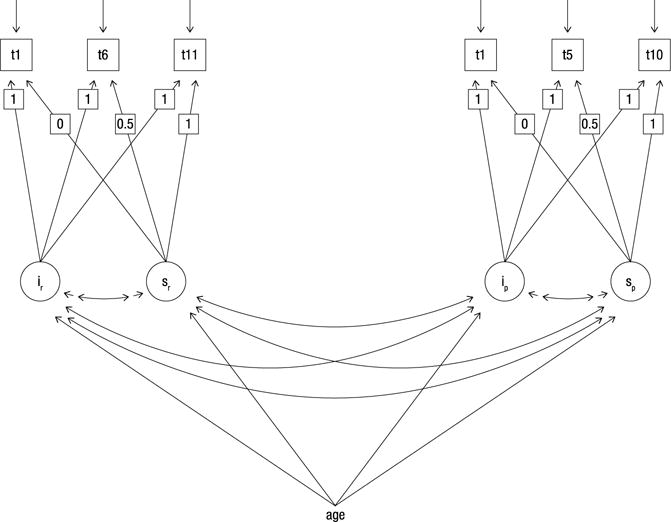Figure 2.

Bivariate latent growth curve model of risk-taking propensity and the Big Five personality traits. The observed variables t1, t6, and t11 (and t1, t5, and t10) represent the repeated measurements of risk-taking propensity (left) and the Big Five personality traits (right). Whereas risk-taking propensity was measured by one item, three items for each trait measured the Big Five. Therefore, for personality, the measurements at t1, t5, and t10 were again latent factors composed of these three items. Two-headed arrows represent correlations, single-headed arrows regression coefficients. The latent intercept (i) is fixed to 1 on t1, t5, and t10 and refers to the estimated mean frequency of risk-taking propensity at t1. The latent slope (s) is fixed to 0.00 on t1, to 0.50 on t5/t6, and to 1 on t10 and refers to the estimated mean difference between two neighboring measurement points. Age was included as predictors of - (i) and (s).
